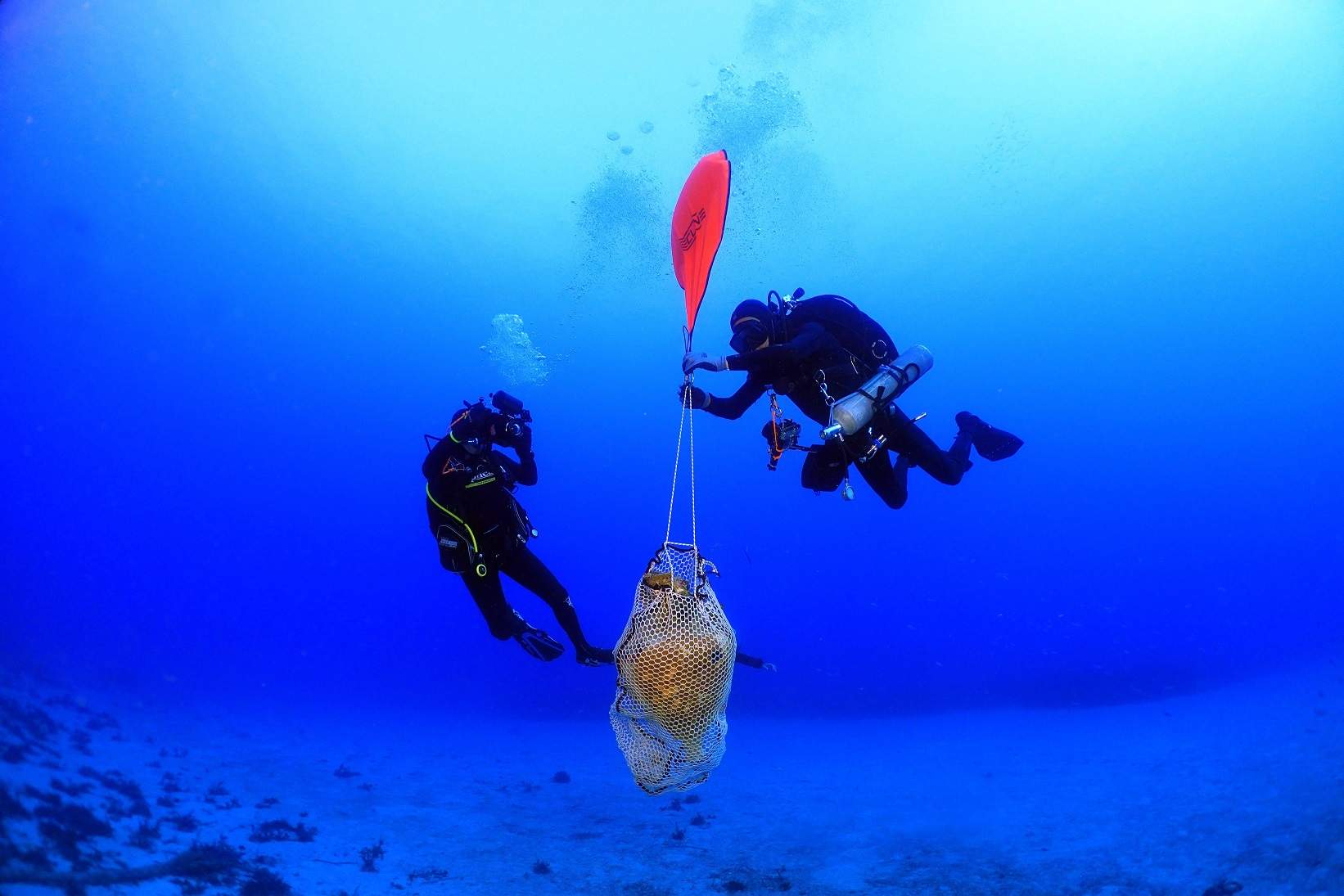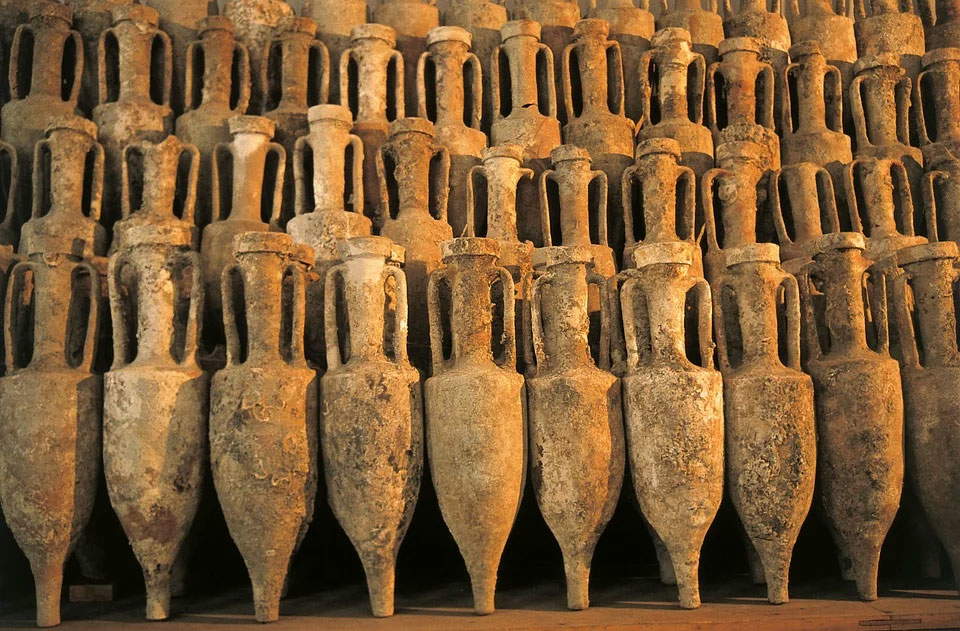When we talk about underwater collecting, we are often dealing with real relics of cultural heritage. Treasures that arouse a certain fascination in enthusiasts, as testimonies of our history that have remained hidden even for centuries in the seabed.
But for those who would succeed in the feat of finding an underwater relic, what are the relevant regulations governing its access? Is the trade of objects such as shipwrecks, amphorae, coins and furnishings free or, conversely, is acquisition by private individuals possible only under certain conditions? And again, to what extent should those who get into underwater archaeological collecting pay attention to the location of the find for the purpose of the lawful provenance of the goods?
 |
| Recovery of an artifact, mission 2021 of the Ephorate of Marine Antiquities of Greece |
For all submerged cultural goods found in territorial waters, i.e., 12 nautical miles from the low tide line along the coast, competence about their protection is governed by national law, and therefore, in Italy, by the 2004 Cultural Heritage Code. The owner will therefore have to prove the provenance of the property and its legitimate acquisition (and thus the various transfers of ownership of the property prior to 1909).
In fact, unless there is proof to the contrary, which must be provided by the private individual who claims ownership of the property, the latter is considered to belong to the State’s unavailable heritage. This even applies to those artifacts that should have become entangled in the fishing nets of a vessel flying the Italian flag outside territorial waters, the nets being an “extension” of the vessel and, therefore, of Italian territory.
The National Superintendence for Underwater Cultural Heritage was recently established (DPCM Dec. 2, 2019, No. 169). Endowed with special autonomy, with its headquarters in Taranto and operational centers in the Adriatic and Tyrrhenian seas, the Superintendence takes care, in coordination with the Superintendencies of Archaeology, Fine Arts and Landscape, of carrying out the activities of protection, management and enhancement of underwater cultural heritage (Art. 94 of the Cultural Heritage Code), as well as the functions attributed to the Ministry with the ratification and execution of the 2001 UNESCO Convention on the Protection of Underwater Cultural Heritage, adopted in Paris in 2001. But not everyone knows that the assets more than 100 years old, found in the seabed beyond the limit of our territorial sea, are protected internationally by the 2001 UNESCO Convention.
The 2001 UNESCO Convention provides a set of basic principles for the protection of underwater heritage. It is a detailed system of cooperation between states and widely recognized rules of practice for the treatment and research of underwater cultural heritage. More specifically, the main commitments made by states by ratifying the 2001 UNESCO Convention and its 31 rules concerning interventions on underwater cultural heritage annexed to the text consist of:
Obligation to preserve underwater cultural heritage. States parties must preserve underwater cultural heritage and take actions accordingly. This means that states that have ratified the Convention have a commitment to take measures commensurate with their capabilities and possibilities. The Convention moreover encourages scientific research and public enjoyment through access to heritage.
In situ protection as the first option. In situ protection of underwater cultural heritage (i.e., at the underwater place of origin) should be considered as a priority option before taking any further and different measures. The discovery of objects can, in any case, be authorized for purposes that contribute to the protection and knowledge of underwater cultural heritage.
No to commercial exploitation. The Convention affirms the important principle that underwater cultural heritage should never be subject to commercial exploitation in the sense of trade or speculation and that the same should not be irreversibly dispersed. This rule is in accordance with moral principles that already apply to property belonging to cultural heritage on land.
Training and exchange of information. States should cooperate and exchange information, promote training on underwater archaeology, and foster public awareness of the value and importance of underwater cultural heritage.
 |
| Roman amphorae |
Enthusiasts of underwater archaeological collecting must first pay special attention to the place of discovery and the lawful provenance of the goods, through appropriate legal due diligence. In this direction, it is essential to acquire all the necessary documentation to prove their authenticity, provenance, title of purchase, free circulation in the national territory and exportability abroad, so that one can put oneself in a position to overcome the presumption of belonging to the State’s unavailable patrimony when the private individual should claim ownership.
Last but not least, the certificates of authenticity and provenance that accompany the asset when purchased on the antique art market assume particular importance. In fact, by express provision of the law (art. 64 of the Code of Cultural Assets), whoever exercises the activity of sale to the public, exhibition for commercial purposes or intermediation aimed at selling even objects of historical or archaeological interest, or otherwise habitually sells the same objects, is obliged to deliver to thebuyer documentation attesting to the authenticity or at least the probable attribution and provenance of the goods; or, failing that, to issue a statement containing all available information on the authenticity or probable attribution and provenance. Such statement, where possible in relation to the nature of the property, shall be affixed to a photographic copy of the object.
Warning: the translation into English of the original Italian article was created using automatic tools. We undertake to review all articles, but we do not guarantee the total absence of inaccuracies in the translation due to the program. You can find the original by clicking on the ITA button. If you find any mistake,please contact us.